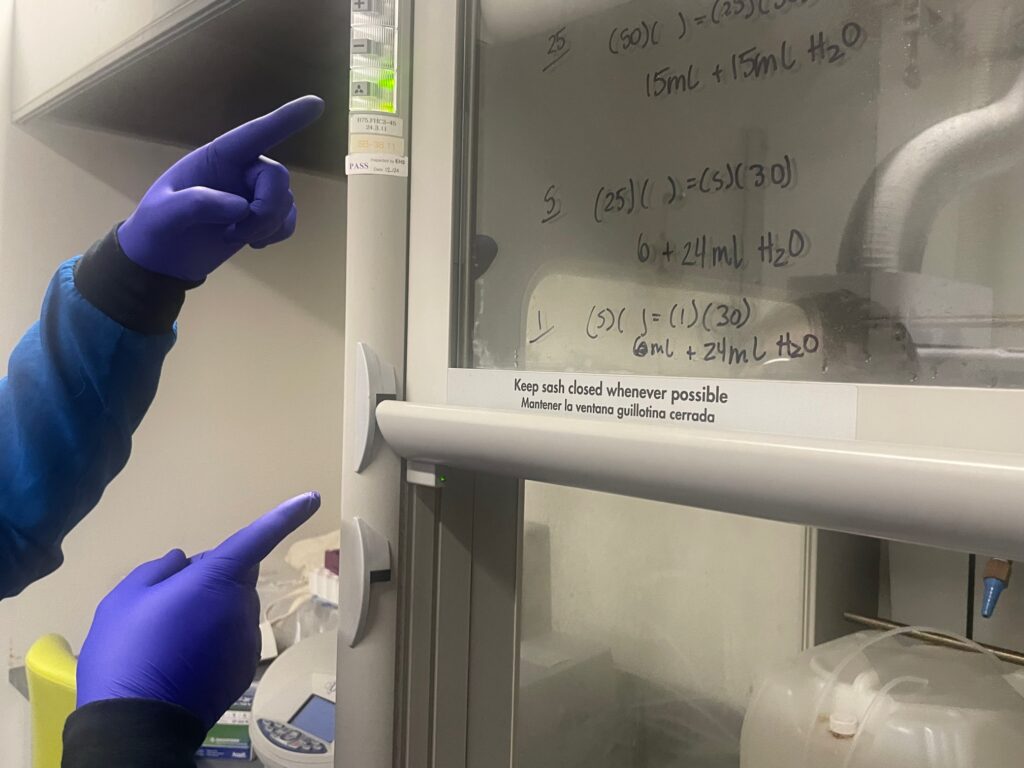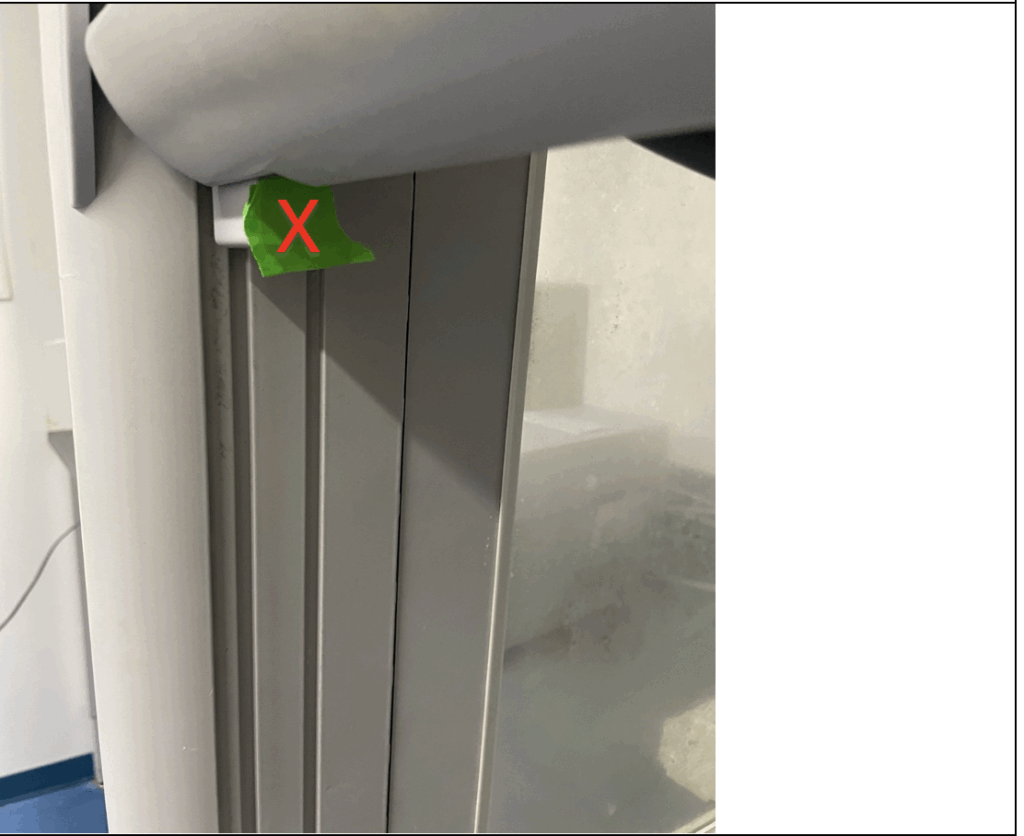Hood Awareness
The hoods are an integral part of your research toolkit here at Princeton Chemistry, and their care and maintenance are essential to helping them function at their peak. With that in mind, Facilities and Safety Manager Stellios Maroulis created this series of lessons to familiarize users with best practices for hood use.
Hood Awareness #1, Fume Hood Sash Stoppers
The fume hoods in our building are like a fine sports car. Like anything else that is meant to be kept and cherished for many years to come, they require a little TLC. What better way to show some care for your work area and ultimately to the environment?
For Part #1 of the Hood Awareness series, we’ll start with something that has become a hot topic and requires urgent attention: the fume hood sash stoppers.
The fume hoods have two open positions: the first stop is 600mm, which is the normal opening; and the second stop is 900mm for a higher reach. It is really important that you don’t go beyond the highest sash stop because going above the 900mm mark will trigger a hood alarm.
Above all, do not remove the sash stop: removal of sash stops is dangerous because it allows the user to bypass the fume hood safe face opening area of operation.
You may ask why this is so important. For starters, the height at which a hood sash is left open will trigger an air flow damper to open and close, as well. These sash locations are the fume hood’s happy place. Think of them like the gears of a car; you don’t want to rev the car too high or you will damage the transmission.
The reason for not removing the sash stops is because, well, our Special Facilities Team will just put new ones back on anyway. So just don’t bother.
The third and perhaps the most important reason is because eventually your hood fume hood sash will get stuck. This could wreak havoc to your hood and even the entire lab.
Take a look at the pictures below for some visual cues. Questions and concerns should be directed to Stellios at: [email protected]

The tabs to the left here are sash stoppers, with the lower stopper marking 600mm and the upper marking 900mm. These stoppers are not to be removed.

The green light above the sash stoppers indicates that the hood is open to an ideal height. Please make sure the green light is "on" when your sash is open.

The yellow light indicates that the sash is NOT at an ideal position. If this yellow light stays on too long, an alarm will go off.
Hood Awareness #2, The Auto-Close Circuit
In Hood Awareness #1, we likened the fume hoods to a fine sports car that needs your careful oversight. Now, we’ll go over some of the safety and sustainability features concerning the Auto-Close Circuit. It is of the utmost importance to not make any alterations or cause damage to these features. After getting to know more about the functionality of your hoods, we know you will agree as well.

The major components of the auto-close circuit are: 1) The proximity sensors - 1- 2 sensors located overhead; 2) the sash sensors - 2 sensors on the sash, left and right; 3) you, the researcher.
A hood’s sash is programmed to close after four minutes of inactivity in front of the hood’s auto close sensors. This not only makes that energy available to the rest of the building, but also lessens our impact on the environment. So, what would happen if you covered any one of those sensors with a piece of tape? It would disable the entire auto-close function. It could also harm other circuits that are associated with the auto close circuit. Just think about the energy wasted when a hood’s sash is left open overnight.
Why would anyone cover one of these sensors with a piece of tape? Perhaps there was a glitch in the circuit which caused the sash to close even while someone was working there. It must be nerve-racking for a hood’s sash to start closing automatically while you have chemicals in your hands. Thankfully the hoods sash is also equipped with a touch sensor that would reverse the direction of the sash on slight contact, but this issue would need to be addressed. The way to address it is not by putting tape over a sensor, but to let us know about the issue so it can be repaired.

Do not cover the sensors with tape.
The hoods come equipped with a speaker for an audible alarm. This speaker should not be visible since it’s located on a circuit board behind the +/- lenses. If it’s visible, please let me know. Covering the speaker with tape or other material could result in damage to the entire circuit, leaving the hood without any alarm indicators; it will require expensive repairs. Do not alter these speakers to dampen the sound of the alarm and risk further issues to your hood. Instances where alarms have been damaged outright due to sound dampening will be investigated and could result in expenses to the researcher.
For questions, comments or concerns please contact Stellios.

Note the location of the audible hood alarms.
